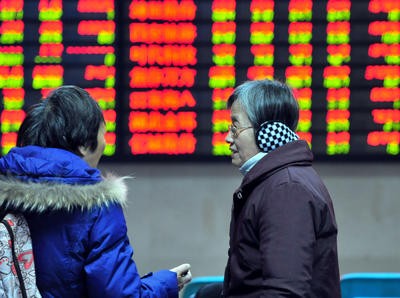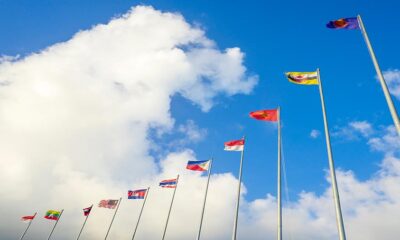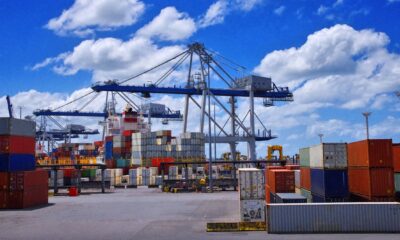Asean
China: will 2012 be a replay of 2009?
Author: Yiping Huang, Peking University China’s economic developments in 2011 closely resembled those of 2008: over-heating at the beginning of the year; moderating due to policy tightening around mid-year; and decelerating as a result of external recession before year’s end. But 2012 will probably not be a replay of 2009, as neither a hard landing nor a sharp rebound look likely this year. GDP growth may slow from 9.1 per cent in 2011 to 8.1 per cent in 2012 — with softer external demand and weaker residential investment — and inflation could ease from 5.5 per cent to 3.2 per cent. Consumption will probably play a greater role in the coming year, and both monetary and fiscal policy should be modestly expansionary. Key risks for China include deeper recession of the world economy and a disorderly correction of the housing market. Currently, China is suffering from a range of economic difficulties, which have fuelled fears of a hard landing. For instance, the number of small and medium enterprises (SMEs) declaring bankruptcy is growing rapidly, with several high-profile cases widely reported in the media. The flow of funds into private lending has been disrupted in certain areas. House prices declined for a third month in November, with potentially significant implications for investment growth and asset quality. Local government investment vehicles, with total liabilities of at least 10.7 trillion yuan (US$1.7 trillion), find it difficult to repay loans when they are due. And the recent expansion of shadow banking transactions may also cause risks for the financial system. But these factors are unlikely lead to a hard landing of the Chinese economy for at least three reasons. First, the changes have mainly been caused by policy adjustments, such as macro-policy tightening and housing restrictions. Some changes, such as the correction of property prices, may be necessary in order to facilitate healthy development in the future. If the situation deteriorates sharply, the government should be able to reverse the policies quickly. Second, these problems have not yet developed into systemic macro risks. Despite an increasing incidence of bankruptcy, for instance, the SME sector as a whole is still growing steadily. Also, the widely reported collapse of private lending activities remain isolated, concentrated largely in Wenzhou city of Zhejiang and Eerduosi city of Inner Mongolia. And third, balance sheets are still quite healthy for households, banks and the government — which should underwrite resilience even if the economic situation deteriorates. Total household borrowing is below 18 per cent of GDP, less than the value of households’ annual savings. If property prices decline modestly, households will not be forced to deleverage. And given the banks’ average non-performing loan ratio is at 2 per cent and the reserve requirement ratio (RRR) is at 21 per cent, some deterioration of credit quality is unlikely to make the banks dysfunctional in the near future. Finally, public debts are only 17 per cent of GDP in China. If all contingent liabilities are included, they could amount to nearly 70 per cent of GDP. But the government still has room to use fiscal resources to contain domestic risks and support economic growth. So based on current trends, 2012 should see a soft landing in China. Affected by a sluggish external economic environment, export and import growth will likely halve to 9.8 per cent and 12.8 per cent, respectively. Reduction in net exports could reduce GDP by 0.4 percentage points. Of the three key components of fixed-asset investment, manufacturing investment is relatively more resilient and infrastructure is more or less a function of government policy. Uncertainty surrounds residential investment, which is likely to slow significantly in the coming year, following sharp adjustment in both property prices and transaction volumes. Despite this, residential investment should continue to grow in 2012 — albeit at a slower pace — due to large development projects, ongoing construction and the expansion of public housing. Domestic consumption will be key to maintaining the economy, although the pace of its expansion should also moderate. In recent years, retail sales have consistently outperformed GDP. But the GDP-by-expenditure data continuously show declining consumption, due to reporting errors in household survey data, such as the under-reporting of income and household spending. Estimates combining information from both GDP by expenditure and retail sales suggest a turning point in 2007, after which consumption’s share of GDP actually picked up steadily. This is consistent with improvements in the social welfare system and a rapid growth of wage income in recent years. The authorities have become vigilant against downside risks, evidenced by the recent adjustment of the reserve requirement ratio. But policy makers are concerned about a premature and aggressive easing of policies, given what might be considered ‘overstimulation’ three years ago. Four more cuts to the RRR and a slight increase in fiscal deficit can also be expected throughout 2012. The purpose of RRR adjustment is to stabilise liquidity conditions, instead of stimulating growth, given the steady slowing of China’s money supply. Although a cut to the policy interest rate is not predicted, the chance of rate cuts could rise significantly if the global economy falls into deeper recession or the correction of the housing market becomes disorderly. Yiping Huang is Professor of Economics at Peking University and Professor at the China Economy Program , the Australian National University. He is also Chief Economist for Asia at Barclays Bank, Hong Kong. Russia and APEC 2012: imaginary engagement? Chinese leadership: The challenge in 2012 India faces an ugly environment in 2009

Author: Yiping Huang, Peking University
China’s economic developments in 2011 closely resembled those of 2008: over-heating at the beginning of the year; moderating due to policy tightening around mid-year; and decelerating as a result of external recession before year’s end.

But 2012 will probably not be a replay of 2009, as neither a hard landing nor a sharp rebound look likely this year. GDP growth may slow from 9.1 per cent in 2011 to 8.1 per cent in 2012 — with softer external demand and weaker residential investment — and inflation could ease from 5.5 per cent to 3.2 per cent. Consumption will probably play a greater role in the coming year, and both monetary and fiscal policy should be modestly expansionary. Key risks for China include deeper recession of the world economy and a disorderly correction of the housing market.
Currently, China is suffering from a range of economic difficulties, which have fuelled fears of a hard landing. For instance, the number of small and medium enterprises (SMEs) declaring bankruptcy is growing rapidly, with several high-profile cases widely reported in the media. The flow of funds into private lending has been disrupted in certain areas. House prices declined for a third month in November, with potentially significant implications for investment growth and asset quality. Local government investment vehicles, with total liabilities of at least 10.7 trillion yuan (US$1.7 trillion), find it difficult to repay loans when they are due. And the recent expansion of shadow banking transactions may also cause risks for the financial system.
But these factors are unlikely lead to a hard landing of the Chinese economy for at least three reasons. First, the changes have mainly been caused by policy adjustments, such as macro-policy tightening and housing restrictions. Some changes, such as the correction of property prices, may be necessary in order to facilitate healthy development in the future. If the situation deteriorates sharply, the government should be able to reverse the policies quickly. Second, these problems have not yet developed into systemic macro risks. Despite an increasing incidence of bankruptcy, for instance, the SME sector as a whole is still growing steadily. Also, the widely reported collapse of private lending activities remain isolated, concentrated largely in Wenzhou city of Zhejiang and Eerduosi city of Inner Mongolia.
And third, balance sheets are still quite healthy for households, banks and the government — which should underwrite resilience even if the economic situation deteriorates. Total household borrowing is below 18 per cent of GDP, less than the value of households’ annual savings. If property prices decline modestly, households will not be forced to deleverage. And given the banks’ average non-performing loan ratio is at 2 per cent and the reserve requirement ratio (RRR) is at 21 per cent, some deterioration of credit quality is unlikely to make the banks dysfunctional in the near future. Finally, public debts are only 17 per cent of GDP in China. If all contingent liabilities are included, they could amount to nearly 70 per cent of GDP. But the government still has room to use fiscal resources to contain domestic risks and support economic growth.
So based on current trends, 2012 should see a soft landing in China. Affected by a sluggish external economic environment, export and import growth will likely halve to 9.8 per cent and 12.8 per cent, respectively. Reduction in net exports could reduce GDP by 0.4 percentage points. Of the three key components of fixed-asset investment, manufacturing investment is relatively more resilient and infrastructure is more or less a function of government policy. Uncertainty surrounds residential investment, which is likely to slow significantly in the coming year, following sharp adjustment in both property prices and transaction volumes. Despite this, residential investment should continue to grow in 2012 — albeit at a slower pace — due to large development projects, ongoing construction and the expansion of public housing.
Domestic consumption will be key to maintaining the economy, although the pace of its expansion should also moderate. In recent years, retail sales have consistently outperformed GDP. But the GDP-by-expenditure data continuously show declining consumption, due to reporting errors in household survey data, such as the under-reporting of income and household spending. Estimates combining information from both GDP by expenditure and retail sales suggest a turning point in 2007, after which consumption’s share of GDP actually picked up steadily. This is consistent with improvements in the social welfare system and a rapid growth of wage income in recent years.
The authorities have become vigilant against downside risks, evidenced by the recent adjustment of the reserve requirement ratio. But policy makers are concerned about a premature and aggressive easing of policies, given what might be considered ‘overstimulation’ three years ago. Four more cuts to the RRR and a slight increase in fiscal deficit can also be expected throughout 2012. The purpose of RRR adjustment is to stabilise liquidity conditions, instead of stimulating growth, given the steady slowing of China’s money supply. Although a cut to the policy interest rate is not predicted, the chance of rate cuts could rise significantly if the global economy falls into deeper recession or the correction of the housing market becomes disorderly.
Yiping Huang is Professor of Economics at Peking University and Professor at the China Economy Program, the Australian National University. He is also Chief Economist for Asia at Barclays Bank, Hong Kong.
- Russia and APEC 2012: imaginary engagement?
- Chinese leadership: The challenge in 2012
- India faces an ugly environment in 2009
Read the rest here:
China: will 2012 be a replay of 2009?
Asean
Deadly Floods and Landslides Strike Indonesia and Thailand – Vietnam Plus

At least seven people were killed, two others were injured and some were likely to be missing after flash floods and landslides hit the Indonesian eastern province of Maluku on the morning of August 25, according to the locality’s disaster management and mitigation office.
Heavy rainfall, which began on August 24, has triggered the disasters in Ternate city. Many local residents are in urgent need of support, authorities said.
Soldiers, police, local search and rescue personnel, disaster management staff, and volunteers are all involved in the ongoing rescue efforts, which include evacuating those trapped by the landslides and recovering materials from homes swept away by the floods.
Meanwhile in Thailand, local authorities reported that the death toll from a landslide in the popular resort province of Phuket on August 23 has risen to 13, including a Russian couple.
Source : Floods, landslides kill many in Indonesia, Thailand – Vietnam Plus
Asean
Tug of War in Southeast Asia: Can ASEAN-China Dialogue Shift the Scales Toward Peace? – An Analysis

The ASEAN-China dialogue is vital for regional stability, addressing economic cooperation and security challenges, particularly in the South China Sea, amidst significant geopolitical complexities and ongoing territorial disputes.
ASEAN-China Dialogue: A Path Towards Cooperation
The ASEAN-China dialogue plays a pivotal role in Southeast Asia’s diplomacy, fostering economic collaboration while addressing security challenges. Despite advances, particularly in managing tensions in the South China Sea, significant barriers remain to achieving lasting peace and stability in the region. ASEAN’s capacity to maintain its unity and centrality is crucial amidst complex power dynamics involving China and other global players.
Navigating Tensions and Economic Relations
A pressing concern within this dialogue is the South China Sea territorial disputes, which involve multiple ASEAN states and China. The militarization of the area raises alarm among regional stakeholders, necessitating urgent negotiations for a Code of Conduct (COC) to manage conflicts. Additionally, the growing economic interdependence fostered by initiatives like the Regional Comprehensive Economic Partnership (RCEP) strengthens ASEAN-China ties, yet it also raises concerns about potential political leverage influencing member states’ autonomy.
The Challenge of Regional Stability
While the ASEAN-China dialogue offers a framework for promoting peace, its effectiveness is conditioned by broader geopolitical contexts, including China’s rivalry with the United States. The success of this dialogue rests on sustaining a commitment to multilateralism and peaceful dispute resolution. As ASEAN adapts to these complex dynamics, it must reinforce its unity and cooperative strategies, ensuring the region’s stability amid evolving challenges.
Source : Tug Of War In Southeast Asia: Will ASEAN-China Dialogue Tip The Balance Towards Peace? – Analysis
Asean
Cambodia Invites Business Leaders to Join the 21st China-ASEAN Expo in Nanning

Cambodia invites businesspeople to the 21st China-ASEAN Expo in Nanning, promoting trade and investment with incentives like hotel coupons and networking opportunities in various sectors.
Cambodia Invites Participation in CAEXPO 2024
Cambodia is actively encouraging business leaders, investors, and service providers to participate in the upcoming 21st China-ASEAN Expo (CAEXPO), set to take place from September 24-28 in Nanning, China. According to a Ministry of Commerce announcement, CAEXPO serves as a vital platform for trade and investment collaborations between ASEAN nations and China.
To facilitate Cambodian participation, the Ministry invites interested individuals to apply as Trade Visitors by August 31, 2024. Participants will benefit from hotel coupons, dining vouchers, and shuttle services to the expo venue. Furthermore, attendees can engage in business matchmaking in sectors such as food processing, digital technology, and renewable energy products.
Kin Phea, from the Royal Academy of Cambodia, emphasized the advancements in China-ASEAN relations, particularly concerning economic cooperation, tourism, and cultural exchanges. He noted that both sides have become each other’s largest trading partners, enhancing collaboration through the Belt and Road initiative, focusing on infrastructure and sustainable development.
Source : Cambodia encourages businesspeople to partake in 21st China-ASEAN Expo in Nanning








